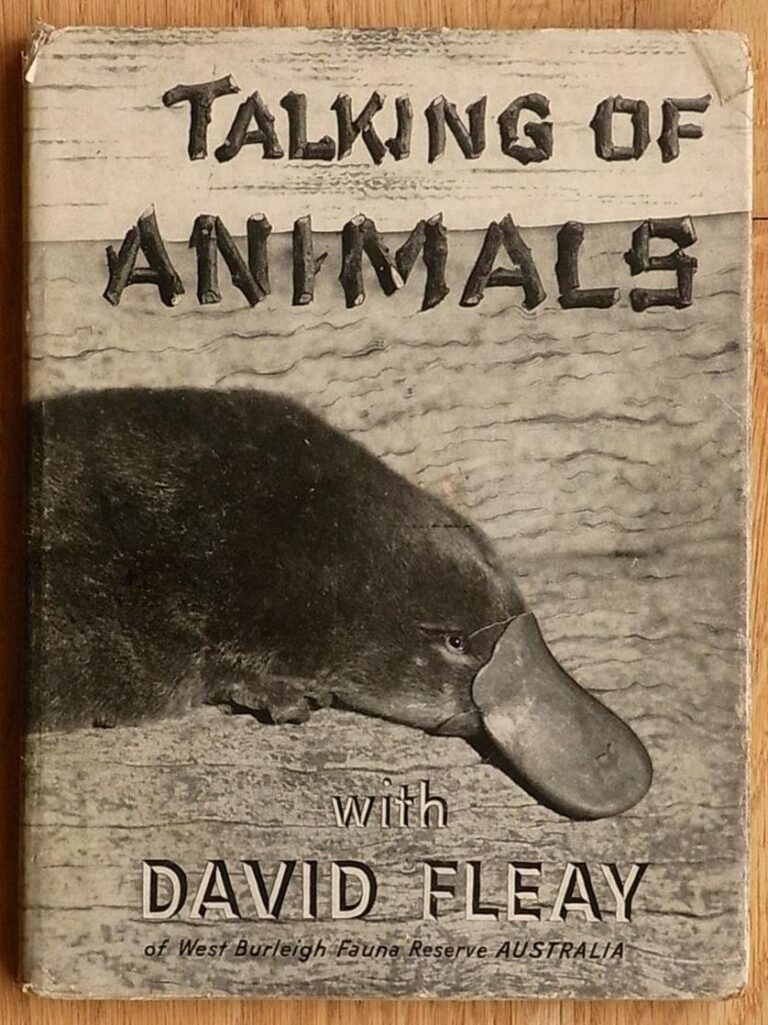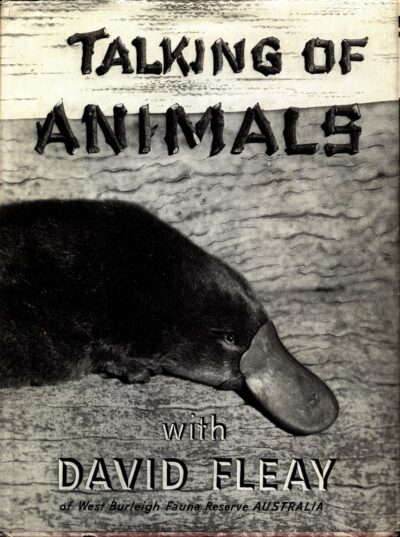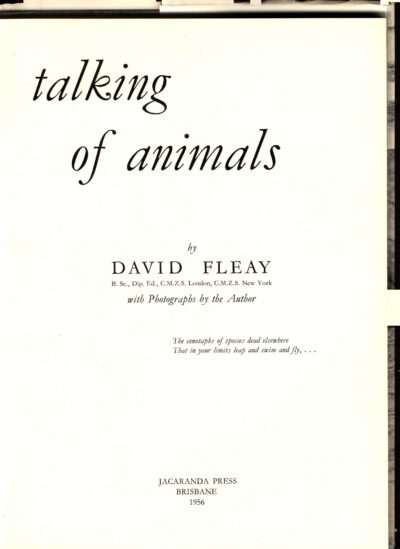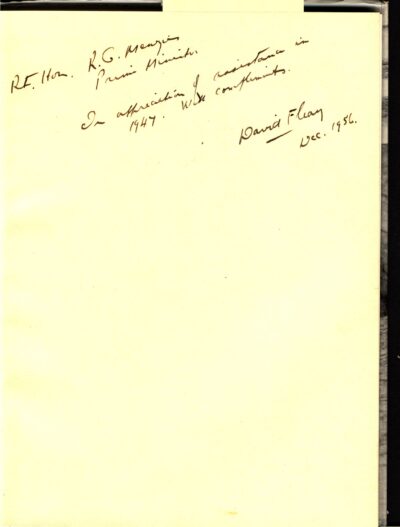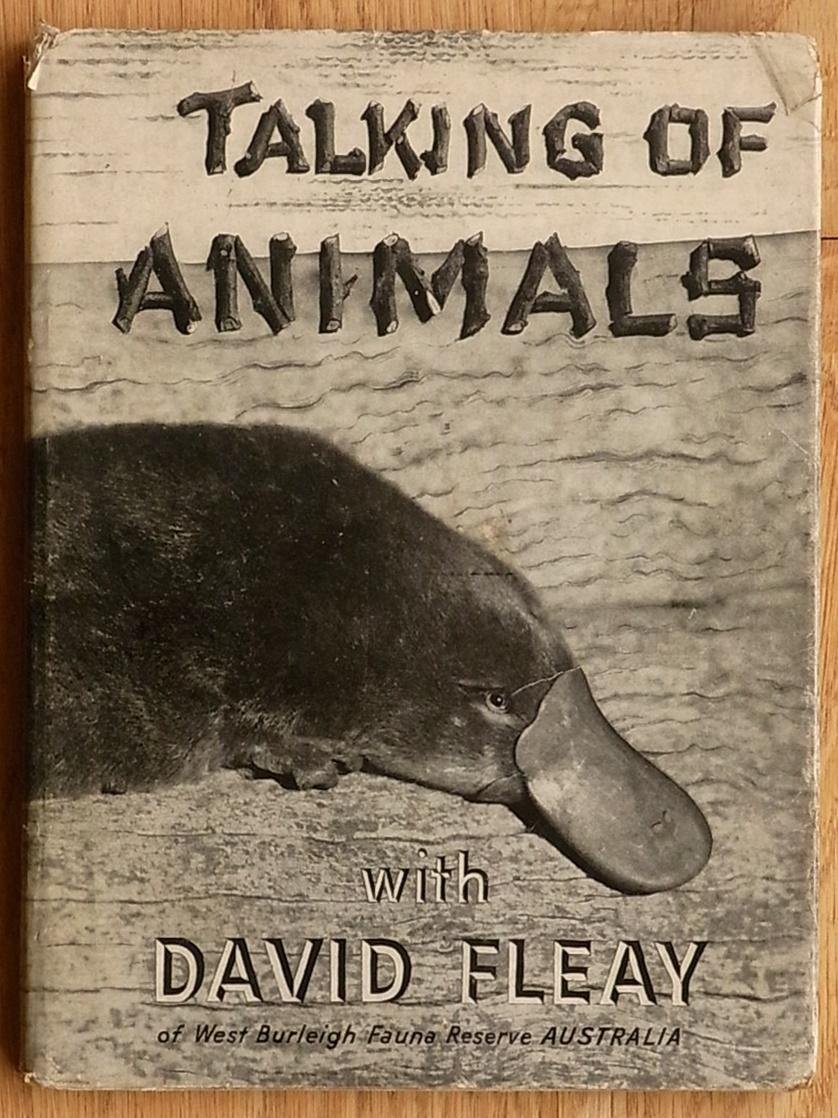David Fleay, Talking of Animals (1956)
David Fleay was an Australian scientist and naturalist with a passion for the preservation of native wildlife which saw him pioneer the breeding of endangered animals in captivity. In many respects he became the Steve Irwin of his day, entertaining the world’s biggest celebrities like Queen Elizabeth II and the Beatles, and raising awareness for the cause of preservation. Journalist Don Marshall said of him ‘Few people could wear more than but a few hats from the list of zoologist, botanist, teacher, naturalist, bushman, herpetologist, handyman, conservationist, falconer, author, columnist, photographer, lobbyist, public relations officer and plain hard worker—David Fleay wears them all with distinction’.
Born in Ballarat in 1907, Fleay had an interest in animals from an early age, however it took him some time to turn this into a career. His father discouraged Fleay’s wildlife hobby, and insisted that he help out with the family pharmacy. After his father’s ill-health saw him retire from the pharmacy, Fleay instead became a teacher, studying science at the University of Melbourne in his spare time. In 1933 he became the last person to photograph a Tasmanian Tiger in captivity, in an encounter at Hobart Zoo in which he was bitten on the bottom resulting in a scar that he would bare proudly throughout his life. Fleay lobbied the Tasmanian Government to introduce a breeding program to save the tiger, but it was to no avail.
By 1934 Fleay had established a reputation as a ‘wildlife man’, and he was chosen to design and direct a new Australian section at the Melbourne Zoo. He worked there for three years, during which time he was able to achieve some significant scientific ‘firsts’, such as the first captive breeding of emus, Australian brush-turkeys, several birds of prey, the tawny frogmouth and a variety of marsupials, including the koala. He later moved to Healesville Wildlife Sanctuary, where he would become the first person to successfully breed a platypus, in his specially built and designed ‘platypusary’. No other person would match this feat until 1999, several years after Fleay passed away.
In 1947 Fleay went on a trip to America, where he donated three platypuses to the Bronx Zoo, and visited numerous other animal establishments to research new techniques and technology. When he returned to Healesville, a discontented board dismissed him for allegedly donating other sanctuary animals to the Americans without permission. This allegation was untrue, and after much public outcry Fleay returned to Healesville as a consultant.
It is presumably this incident to which Fleay refers in his inscription on Menzies’s copy of Talking of Animals. This reads, ‘Rt. Hon. R.G. Menzies Prime Minister. In appreciation of assistance in 1947. With compliments, David Fleay, Dec. 1956’. What the nature of Menzies’s assistance was is difficult to now uncover, but with the help of people like Menzies, Fleay was able to recover his reputation and career, allowing him to continue his life’s work of helping animals. We know that Fleay was likely sympathetic towards Menzies’s politics, as his wife and fellow naturalist Mary was elected vice-president of the Healesville Branch of the Liberal and Country Party in 1950.
In 1951 the Victorian Government banned private individuals from asking for and accepting token admission fees from members of the public wishing to view their personal native fauna collections. This forced Fleay to move to southeast Queensland, where he set up a wildlife reserve to house and protect native animals. This was explicitly not a ‘zoo’, but instead a place of research and education that would try to recreate the natural habitat of animals as closely as possible. This was eventually handed over to the Queensland Government, and continues to operate to this day.
You might also like...
Sign up to our newsletter
Sign up for our monthly newsletter to hear the latest news and receive information about upcoming events.

